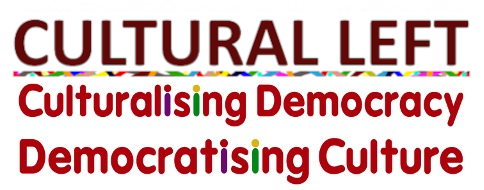
Through stories of non-disclosure agreements signed by staff, Osnos demonstrates the lifestyle of the ultra-rich through their yachts
Throughout The Haves and Have-Yachts—Dispatches on the Ultrarich, Evan Osnos depicts the lifestyle of America’s ruling class.
They attempt to live their lives in exclusivity and flamboyant secrecy, untouchable for working class Americans. Yet they are always dabbling in their lives.
Through stories of private concerts and non-disclosure agreements signed by staff, Osnos demonstrates the lifestyle of the ultra-rich through their yachts.
A world of relentless competition is built into the lifestyle, down to who gets the best spot in the marina. Yet 11.5 percent of households in the United States live below the poverty line.
Osnos presents the life of the ultra-rich not only as one of endless competition and vaunted privacy, but one utterly disconnected from the lives of ordinary people.
This world is also “beyond the reach of ordinary law enforcement”—most of the time.
Yet the wealthy consistently reach down to play with the world of the working class.
Osnos explains the role that the ultra-rich played in the election, and re-election, of Donald Trump.
It’s not the exclusive reason for Trump’s success. But the backing he received from the ultra‑rich as the anti‑establishment candidate opposite a failing Democratic Party helped him massively. This would have devastating effects on the working class, deepening the austerity and militarisation seen under Barack Obama.
Osnos illustrates the tight interweaving of the ultra‑rich and politicians—as seen through the prominence the likes of Elon Musk and Mark Zuckerberg receive. He also shows the way that the ultra-rich manipulate what is described as a democratic electoral system itself.
Parliamentary politics and elections are seen as opportunities for ordinary people to have a voice. But Osnos’s descriptions show how this system is played by the ruling class to uphold policies that benefit them.
However, Osnos stops short of placing the blame on capitalism itself as the driving force behind competition, political entanglement and inequality. While occasionally blaming the greed of capitalists, he fails to explain this in any depth.
He fails to locate the root cause of the ultra‑rich’s lifestyle and their very existence. He also fails to pinpoint their drive to protect their wealth through fraud and political interference.
Osnos leaves the reader with no real answer as to how to undo that damage or break down the very system that created it.
- The Haves and Have-Yachts: Dispatches on the Ultrarich by Evan Osnos is out now and available from Bookmarks, £22
Finding the radical anti-Zionist Jewish tradition
Almost the entire justification for the Israeli state’s aggression in Palestine and the Middle East is that Israel alone represents all Jews, many having been the victims of racist extermination during the Holocaust.
Therefore, the pro-Palestine actions of American Jews, with the occupation of New York’s Grand Central Station in October 2023 and the US Capitol building in July 2024 merely being the best-known examples, are significant.
Of the 16 million people who identify as Jewish globally, 46 percent live in Israel. Polls show they overwhelmingly support the ongoing carnage. But 40 percent live in the United States, and of these, writes Benjamin Balthaser—“in 2023, over one-third of American Jews considered Israel’s assault on Gaza a ‘genocide’, twice the number of other Americans.”
He tries to make sense of this by looking at US Jewish history over the past century.
Domestic circumstances are an important driver. In other words, the movement in the US needs to be seen in its own terms and not just a local Jewish version of the broader pro-Palestine movement on the world scale.
The story begins with mass immigration from eastern Europe in flight from antisemitism. Zionists, who were a tiny minority, went to Palestine. Everyone else went to places like the US. On arrival in Palestine the immigrants became part of a settler colonial project, but in the US they entered the bottom rungs of growing capitalism and were at the forefront of many class struggles.
From the 1967 “Six Day War” onwards, however, US imperialism committed itself to promoting Israel as its Middle East weapon and the Liberal position became increasingly untenable. For example, opposing the US government over war in Vietnam abroad, or brutal repression of black civil rights and the Black Panthers at home, was incompatible with supporting the government’s backing for an increasingly right-wing Israel. The community split.
Balthaser’s book has interesting points to make but is not an easy read. However, the developments it describes are an important piece of the jigsaw puzzle for understanding current politics in relation to Palestine and Israel both in the US and worldwide.
Donny Gluckstein
- Citizens of the Whole World: Anti-Zionism and the Cultures of the American Jewish Left by Benjamin Balthaser is out now and available from Bookmarks, £22




